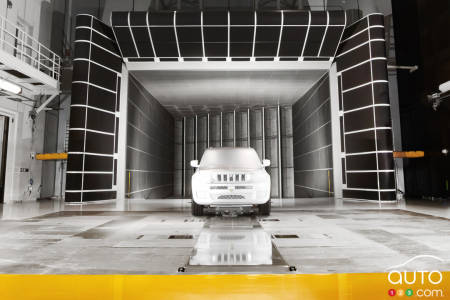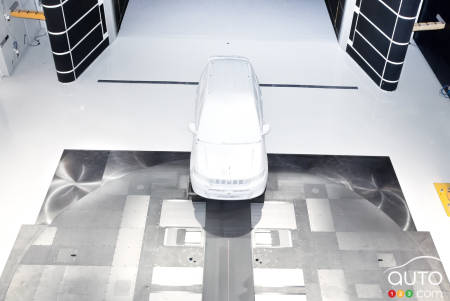• Stellantis has invested $29.5 million to upgrade its testing wind tunnels to improve the range of its all-electric models.
With any electric vehicle, aerodynamics play a major role in maximizing range. The more efficiently the vehicle cuts through the air, the greater its range. So it's crucial for manufacturers to offer vehicles that are as aerodynamic as possible.
To achieve this, they need to invest in wind tunnels, where they can analyze where the air passes around a vehicle. These tunnels have been in use for ages, and have been greatly improved over the years, to such an extent that they have become extremely useful and efficient tools.
Stellantis recently invested $29.5 million USD to modernize the company's facilities at its U.S. headquarters in Auburn Hills, Michigan. The aim is simple: to increase the range of the company's EVs by reducing the drag caused by them.

The investments are mainly being used to add moving-ground-plane technology, which essentially consists of a rolling surface. The aim is to include the wheels in a rolling situation during testing. Since the vehicle is usually static in the wind tunnel, its wheels do not move, which does not represent the reality of driving conditions.
With the new equipment, each wheel has its own belt that works like a conveyor belt, while a fifth belt runs longitudinally under the vehicle, reproducing road conditions.
It’s this configuration that allows the vehicle's wheels to turn at realistic speeds, rather than remaining immobile. Engineers can then compile more precise measurements of air resistance and flow at wheel and tire height.
Stellantis' wind tunnel, which has been in operation since 2002, is capable of generating wind speeds of almost 300 km/h.
Stellantis stated that airflow resistance due to wheels and tires alone can affect aerodynamic drag by up to 10 percent during actual vehicle use. Reducing resistance can increase range and, consequently, lead to smaller batteries, which, in turn, could lead to cost and weight savings, says the manufacturer.
This investment comes at a time when Stellantis is looking to cut costs. However, we're not talking about major investments, especially as these can really pay off down the road.







